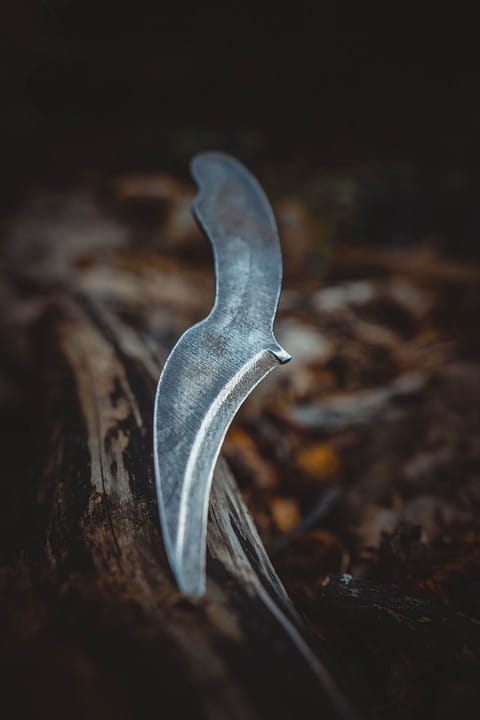Comparison Articles: A Comprehensive Guide to Choosing the Right Pocket Knife for Your Needs
As a seasoned outdoorsman or enthusiast of pocket knives, you’re likely familiar with the countless options available in the market. With so many styles, features, and prices to choose from, it’s easy to get overwhelmed. In this article, we’ll break down the key factors to consider when selecting the perfect pocket knife for your specific needs. Whether you’re a seasoned veteran or a newcomer to the world of pocket knives, this comprehensive guide will walk you through the essential considerations to make an informed decision.
The Evolution of Pocket Knives: A Brief History
Pocket knives have been around for centuries, with the first recorded reference dating back to the 14th century. Initially, they were primarily used forutility and self-defense, but over time, they have evolved to cater to a wider range of applications. Today, we have pocket knives designed for outdoor enthusiasts, collectors, and even everyday carry. Let’s take a look at some of the key factors that influence the design and functionality of these versatile tools.
Key Features to Consider
Blade Material and Construction
The blade is the most critical component of a pocket knife. The material, shape, and construction can significantly impact its performance, durability, and overall value. Some common blade materials include:
| Blade Material | Pros | Cons |
|---|---|---|
| High-Carbon Steel | Excellent for sharpness and edge retention | Can be brittle and prone to rust |
| Stainless Steel | Resistant to corrosion and rust | Softer and less sharp than high-carbon steel |
| Titanium | Lightweight and corrosion-resistant | More expensive and prone to scratches |
Handle Material and Ergonomics
The handle is where your hand meets the knife, and it’s essential to find a material that provides a secure grip, comfort, and control. Common handle materials include:
| Handle Material | Pros | Cons |
|---|---|---|
| G10 | High-friction grip and comfortable | Heavy and expensive |
| Micarta | Lightweight and grippy | May not be as durable as other materials |
| Canvas Micarta | Balances weight and grip | Can be more expensive |
Lock and Mechanism
The lock and mechanism determine the knife’s overall functionality and reliability. Consider the following:
| Lock/ Mechanism | Pros | Cons |
|---|---|---|
| Liner Lock | Fast deployment and secure locking | Can be prone to accidental deployment |
| Frame Lock | Smooth action and durability | Limited access to the blade |
| Ball Bearing | Fast and smooth deployment | Can be prone to rust |
Choosing the Right Pocket Knife for Your Needs
Now that we’ve covered the key features to consider, let’s focus on how to choose the right pocket knife for your specific needs. Follow these steps:
- Determine Your Budget: Set a budget and stick to it. Pocket knives can range from under $10 to over $500, so it’s essential to set a realistic limit.
- Identify Your Needs: Consider the tasks you’ll be using the knife for, such as outdoor activities, self-defense, or everyday carry. This will help you narrow down the feature set.
- Read Reviews and Research: Look at reviews from reputable sources, forums, and online communities to get a sense of the knife’s performance, durability, and any potential issues.
- Handle and Ergonomics: Pay attention to the handle material, ergonomic design, and overall feel of the knife. A comfortable grip is crucial for reliable performance.
- Warranty and Support: Check the manufacturer’s warranty, customer support, and return policy in case you need repairs or replacements.
Frequently Asked Questions
Do you often get stuck deciding on the perfect pocket knife? Here are some FAQs to help you make an informed decision:
- What is the best blade material for a pocket knife?
- High-carbon steel is generally considered the best for its sharpness and edge retention, but it can be more brittle and prone to rust.
- How do I choose the right size pocket knife?
- Consider the tasks you’ll be using the knife for and choose a size that balances convenience with functionality.
- Are titanium pocket knives worth the extra money?
- Titanium is an excellent material, but at a significant premium. It’s worth considering for its lightweight, corrosion-resistant, and durable properties.
Conclusion
Choosing the right pocket knife can be a daunting task, but by understanding the key features, considering your needs, and doing your research, you can find the perfect companion for your outdoor adventures or daily carry. Remember to prioritize your budget, handle and ergonomics, and warranty support to ensure a reliable and satisfying experience. Whether you’re a seasoned expert or a newcomer to the world of pocket knives, this comprehensive guide has provided you with the insights and knowledge to make an informed decision. Happy knife shopping!
